Mercan Topkara
Multilingual Visual Sentiment Concept Matching
Jun 07, 2016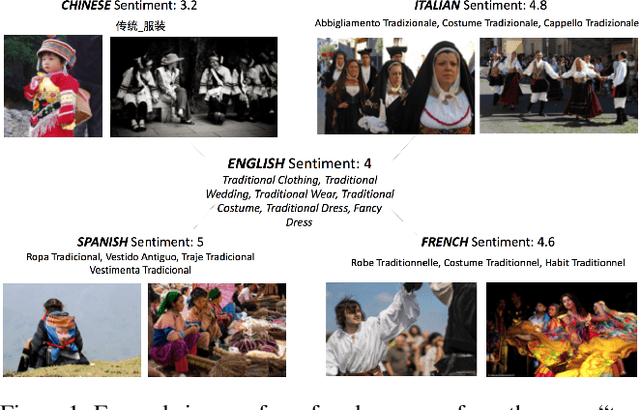
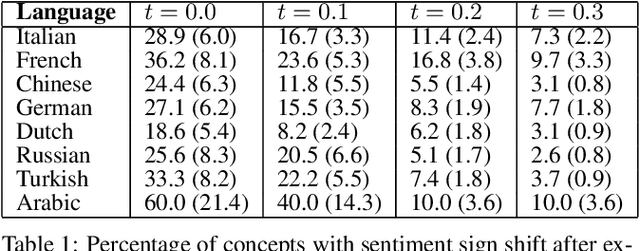

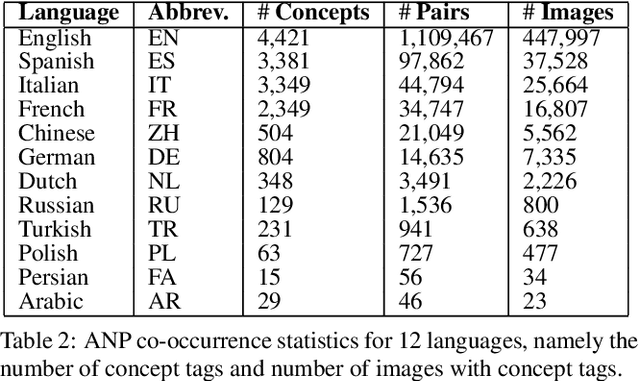
Abstract:The impact of culture in visual emotion perception has recently captured the attention of multimedia research. In this study, we pro- vide powerful computational linguistics tools to explore, retrieve and browse a dataset of 16K multilingual affective visual concepts and 7.3M Flickr images. First, we design an effective crowdsourc- ing experiment to collect human judgements of sentiment connected to the visual concepts. We then use word embeddings to repre- sent these concepts in a low dimensional vector space, allowing us to expand the meaning around concepts, and thus enabling insight about commonalities and differences among different languages. We compare a variety of concept representations through a novel evaluation task based on the notion of visual semantic relatedness. Based on these representations, we design clustering schemes to group multilingual visual concepts, and evaluate them with novel metrics based on the crowdsourced sentiment annotations as well as visual semantic relatedness. The proposed clustering framework enables us to analyze the full multilingual dataset in-depth and also show an application on a facial data subset, exploring cultural in- sights of portrait-related affective visual concepts.
Visual Affect Around the World: A Large-scale Multilingual Visual Sentiment Ontology
Oct 07, 2015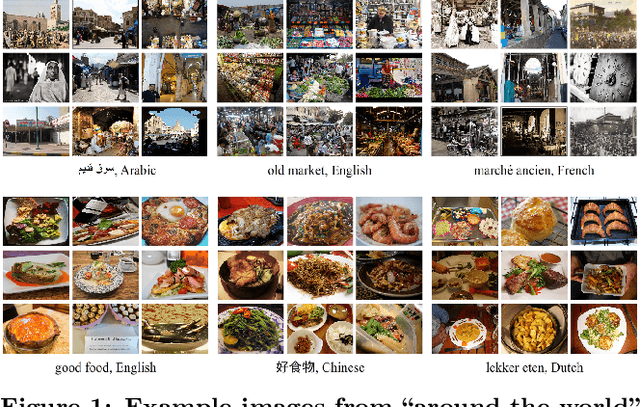


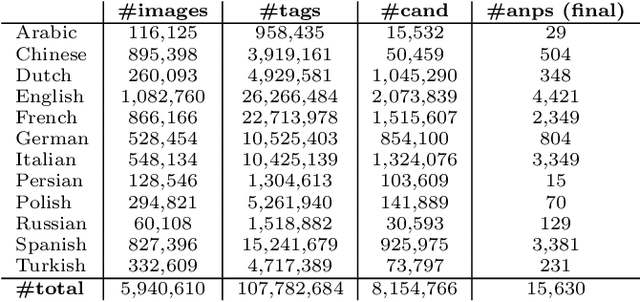
Abstract:Every culture and language is unique. Our work expressly focuses on the uniqueness of culture and language in relation to human affect, specifically sentiment and emotion semantics, and how they manifest in social multimedia. We develop sets of sentiment- and emotion-polarized visual concepts by adapting semantic structures called adjective-noun pairs, originally introduced by Borth et al. (2013), but in a multilingual context. We propose a new language-dependent method for automatic discovery of these adjective-noun constructs. We show how this pipeline can be applied on a social multimedia platform for the creation of a large-scale multilingual visual sentiment concept ontology (MVSO). Unlike the flat structure in Borth et al. (2013), our unified ontology is organized hierarchically by multilingual clusters of visually detectable nouns and subclusters of emotionally biased versions of these nouns. In addition, we present an image-based prediction task to show how generalizable language-specific models are in a multilingual context. A new, publicly available dataset of >15.6K sentiment-biased visual concepts across 12 languages with language-specific detector banks, >7.36M images and their metadata is also released.
 Add to Chrome
Add to Chrome Add to Firefox
Add to Firefox Add to Edge
Add to Edge